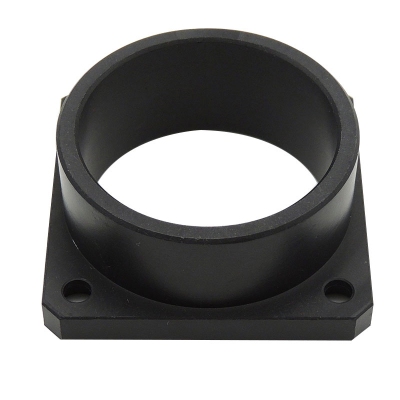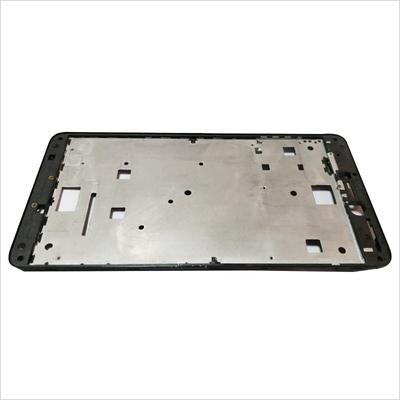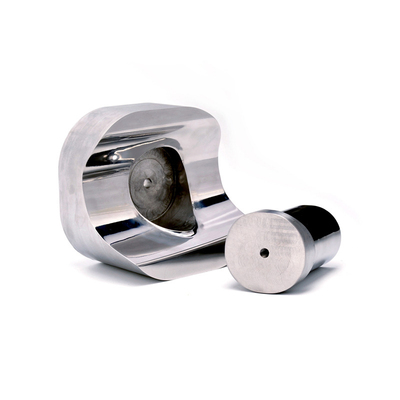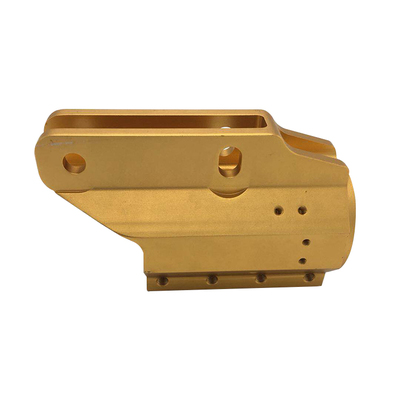Complex Sculpture Surface CNC Machining
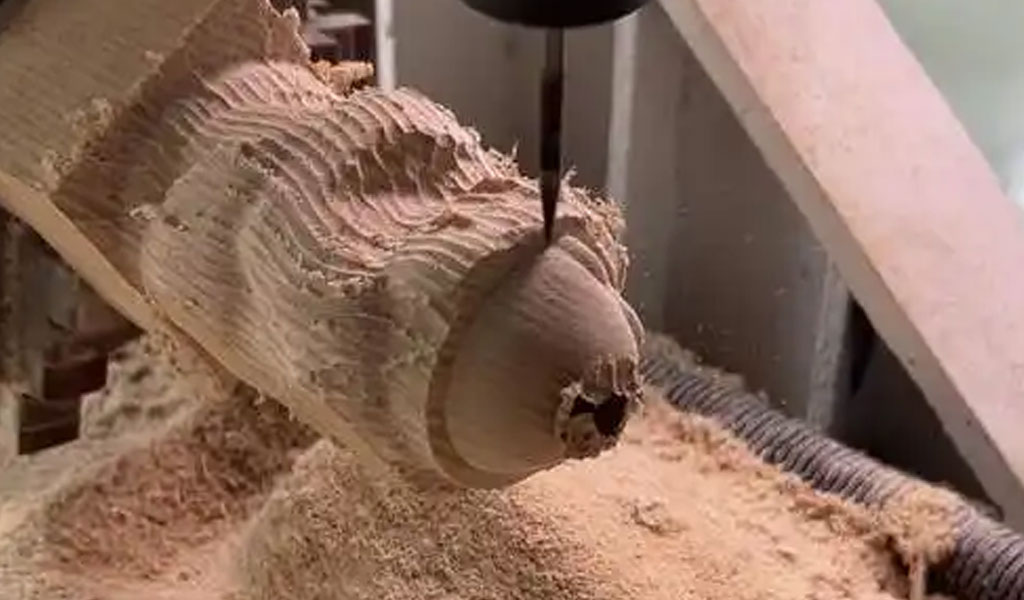
Complex sculpture surface CNC machining refers to the advanced manufacturing process of creating intricate, three-dimensional sculptural forms using computer numerical control (CNC) systems. This technique is widely employed in industries such as aerospace, automotive, art, and architecture to produce components or artistic pieces with highly detailed, non-linear geometries that are challenging or impossible to achieve through traditional manual machining or casting methods. The process integrates computer-aided design (CAD), computer-aided manufacturing (CAM), and precision machining tools to transform digital models into physical objects with high accuracy and repeatability. This article explores the principles, technologies, methodologies, challenges, and applications of complex sculpture surface CNC machining, providing a comprehensive overview of its significance in modern manufacturing and creative industries.
The advent of CNC machining has revolutionized manufacturing by enabling the production of complex geometries with unprecedented precision. Complex sculpture surfaces—characterized by freeform, non-planar, and often organic shapes—pose unique challenges due to their intricate contours and variable curvatures. These surfaces are common in applications ranging from aerodynamic aircraft components to avant-garde architectural facades and artistic sculptures. CNC machining, with its ability to control multi-axis tools through computer programming, has become the cornerstone technology for fabricating such surfaces. This article delves into the technical foundations, historical evolution, and practical considerations of CNC machining for complex sculpture surfaces, addressing its interdisciplinary relevance in engineering, design, and art.
Historical Context
Early Machining Techniques
Before the development of CNC technology, sculptural surfaces were crafted through labor-intensive manual processes or rudimentary mechanical methods. Artisans used hand tools, such as chisels and files, to carve materials like wood, stone, or metal, relying heavily on skill and experience. The Industrial Revolution introduced mechanical lathes and milling machines, which improved efficiency but were limited to simple geometries like flat surfaces, cylinders, or basic curves. Complex surfaces, such as those found in ornate architectural elements or early aircraft designs, required extensive manual finishing, leading to inconsistencies and high costs.
Emergence of Numerical Control
The concept of numerical control (NC) emerged in the 1940s, driven by the need for precision in aerospace manufacturing. Early NC machines used punched tape to store instructions for tool movements, allowing repeatable production of parts. The transition to computer numerical control in the 1960s, facilitated by advancements in computing, marked a turning point. CNC systems enabled the programming of multi-axis machines capable of handling complex geometries. By the 1980s, the integration of CAD/CAM software allowed designers to create digital models of freeform surfaces, which could be directly translated into machining instructions, laying the groundwork for modern complex sculpture surface machining.
Modern Advancements
Today, CNC machining for complex surfaces benefits from high-speed spindles, advanced toolpath algorithms, and multi-axis machines (3-, 4-, 5-axis, and beyond). The development of adaptive machining, real-time toolpath optimization, and additive-subtractive hybrid systems has further expanded the capabilities of CNC technology. These advancements have made it possible to machine materials ranging from soft polymers to high-strength alloys with intricate surface details, meeting the demands of industries requiring both functional and aesthetic precision.
Principles of Complex Sculpture Surface CNC Machining
Definition of Complex Sculpture Surfaces
Complex sculpture surfaces, often referred to as freeform or non-uniform rational B-spline (NURBS) surfaces, are characterized by their non-linear, smooth, and continuous geometries. Unlike prismatic or ruled surfaces, which can be described by simple mathematical equations, sculpture surfaces require advanced mathematical representations, such as NURBS or Bézier curves, to define their shapes. These surfaces are prevalent in designs where aesthetics, aerodynamics, or ergonomics are critical, such as turbine blades, car body panels, or abstract sculptures.
CNC Machining Fundamentals
CNC machining involves the use of computer-controlled tools to remove material from a workpiece, shaping it into the desired form. The process begins with a digital model created in CAD software, which is then processed by CAM software to generate toolpaths. These toolpaths dictate the movement of cutting tools across the workpiece, accounting for factors such as tool geometry, material properties, and surface finish requirements. For complex surfaces, multi-axis CNC machines are employed to allow the tool to approach the workpiece from multiple angles, ensuring accessibility to intricate features.
Multi-Axis Machining
Complex sculpture surfaces often require 5-axis or higher CNC machines, which provide rotational and translational degrees of freedom. A 5-axis machine typically includes three linear axes (X, Y, Z) and two rotational axes (A, B, or C), enabling the tool to orient itself dynamically relative to the workpiece. This flexibility is crucial for machining undercuts, deep cavities, and continuous curves without repositioning the workpiece, which could introduce errors.
Key Technologies in Complex Sculpture Surface Machining
CAD/CAM Integration
The workflow for machining complex surfaces begins with CAD software, where designers create a digital model of the sculpture surface. Common software includes SolidWorks, Autodesk Fusion 360, and Rhino, which support NURBS-based modeling for freeform shapes. The CAD model is imported into CAM software (e.g., Mastercam, Siemens NX, or PowerMill), which generates toolpaths based on the geometry, machining strategy, and material properties. Advanced CAM systems offer features like collision detection, toolpath optimization, and simulation to ensure error-free machining.
Toolpath Generation Strategies
Toolpath generation is critical for achieving high-quality surface finishes on complex geometries. Common strategies include:
-
Zigzag Toolpaths: The tool moves in a back-and-forth pattern, suitable for roughing operations.
-
Spiral Toolpaths: The tool follows a continuous spiral, ideal for finishing smooth surfaces.
-
Flowline Toolpaths: The tool follows the natural curvature of the surface, minimizing tool marks.
-
Adaptive Clearing: Adjusts the toolpath dynamically to maintain consistent cutting forces, reducing tool wear.
Each strategy is selected based on the surface complexity, material, and desired finish. For example, spiral toolpaths are preferred for organic shapes to avoid visible tool marks, while adaptive clearing is used for high-speed roughing of tough materials like titanium.
Machine Tools and Configurations
CNC machines for complex surfaces range from 3-axis mills to advanced 5-axis machining centers. Key configurations include:
-
Vertical Machining Centers (VMCs): Suitable for 3-axis operations on relatively simple surfaces.
-
Horizontal Machining Centers (HMCs): Offer better chip evacuation for heavy-duty machining.
-
5-Axis Machining Centers: Provide the flexibility needed for complex surfaces, with configurations like trunnion tables or swivel heads.
-
Hybrid Machines: Combine additive (e.g., 3D printing) and subtractive (CNC machining) processes for creating complex parts with internal features.
Cutting Tools
The choice of cutting tools significantly impacts machining efficiency and surface quality. Common tools include:
-
Ball-End Mills: Ideal for finishing complex surfaces due to their spherical tip, which follows curved geometries.
-
Flat-End Mills: Used for roughing and planar surfaces.
-
Torus Cutters: Combine the benefits of ball-end and flat-end mills, offering versatility for semi-finishing.
-
Specialized Tools: Such as lollipop cutters for undercuts or tapered tools for deep cavities.
Tool materials, such as carbide, high-speed steel (HSS), or diamond-coated tools, are selected based on the workpiece material and machining conditions.
Materials for Complex Sculpture Surface Machining
Complex sculpture surfaces are machined from a wide range of materials, each presenting unique challenges and requirements. The following table compares common materials used in CNC machining for complex surfaces:
|
Material |
Properties |
Applications |
Machining Challenges |
Tooling Recommendations |
|---|---|---|---|---|
|
Aluminum |
Lightweight, corrosion-resistant, ductile |
Aerospace components, sculptures |
Gummy chips, heat buildup |
Carbide tools, high-speed machining |
|
Stainless Steel |
High strength, corrosion-resistant |
Turbine blades, medical implants |
High cutting forces, work hardening |
Coated carbide, low feed rates |
|
Titanium |
High strength-to-weight ratio, biocompatible |
Aerospace, medical devices |
Low thermal conductivity, tool wear |
Diamond-coated tools, coolant |
|
Plastics (e.g., ABS, PEEK) |
Lightweight, versatile |
Prototypes, artistic pieces |
Melting, poor chip formation |
Sharp HSS tools, low temperatures |
|
Composites (e.g., CFRP) |
High strength, lightweight |
Aircraft panels, automotive parts |
Delamination, fiber pullout |
Diamond-coated or PCD tools |
|
Tool Steel |
High hardness, wear-resistant |
Molds, dies |
High cutting forces, heat generation |
Carbide or CBN tools |
|
Wood |
Natural, aesthetic |
Furniture, artistic sculptures |
Grain direction issues, dust generation |
Sharp carbide tools, dust control |
Material-Specific Considerations
-
Metals: Require robust tooling and cooling systems to manage heat and cutting forces. For example, titanium’s low thermal conductivity necessitates coolant to prevent tool overheating.
-
Plastics: Demand sharp tools and low cutting speeds to avoid melting or deformation.
-
Composites: Require specialized tools like polycrystalline diamond (PCD) to minimize delamination and ensure clean cuts.
-
Wood: Needs dust extraction systems and tools designed to handle varying grain directions.
Machining Process Workflow
Design Phase
The process begins with the creation of a 3D model in CAD software. Designers define the sculpture surface using NURBS, meshes, or parametric modeling techniques. The model must account for manufacturing constraints, such as tool accessibility and material properties. Tolerances and surface finish requirements are specified at this stage to guide toolpath generation.
Toolpath Planning
CAM software analyzes the CAD model to generate toolpaths. Key considerations include:
-
Roughing: Removes bulk material using high feed rates and large tools to approximate the final shape.
-
Semi-Finishing: Refines the surface with smaller tools, reducing stepovers to improve accuracy.
-
Finishing: Achieves the final surface quality using fine tools and optimized toolpaths, such as flowline or spiral paths.
-
Post-Processing: Converts toolpaths into machine-specific G-code, accounting for the CNC machine’s kinematics and controller.
Machining Execution
The workpiece is secured on the CNC machine using fixtures like vises, clamps, or vacuum tables. The machine executes the G-code, controlling tool movements, spindle speeds, and feed rates. Operators monitor the process for issues like tool wear, vibration, or material defects, using real-time feedback from sensors in advanced systems.
Post-Machining
After machining, the part may undergo finishing processes such as polishing, sandblasting, or coating to enhance aesthetics or functionality. Inspection using coordinate measuring machines (CMM) or laser scanners ensures the part meets dimensional and surface quality specifications.
Challenges in Complex Sculpture Surface Machining
Geometric Complexity
The non-linear nature of sculpture surfaces complicates toolpath planning. Undercuts, steep inclines, and varying curvatures require multi-axis machining and precise tool orientation to avoid collisions and ensure accessibility.
Tool Wear and Deflection
Complex surfaces often involve prolonged tool engagement, leading to wear, especially in hard materials like titanium or tool steel. Tool deflection can also occur, causing dimensional inaccuracies. Strategies like adaptive machining and high-speed spindles mitigate these issues.
Surface Finish Quality
Achieving a smooth, defect-free surface is challenging due to tool marks, vibrations, or material properties. Finishing toolpaths, such as flowline or spiral, and post-processing techniques like polishing are critical for high-quality results.
Computational Demands
Generating toolpaths for complex surfaces requires significant computational resources. CAM software must process large datasets, optimize toolpaths, and simulate machining to detect errors, which can be time-consuming for intricate designs.
Material Variability
Materials like composites or wood exhibit anisotropic properties, complicating machining. For example, carbon fiber reinforced polymers (CFRP) may delaminate if improper tools or parameters are used, while wood’s grain direction affects surface quality.
Applications of Complex Sculpture Surface CNC Machining
Aerospace
In aerospace, complex surfaces are critical for components like turbine blades, wing skins, and fuselage panels. These parts require precise aerodynamic profiles and tight tolerances. For example, a turbine blade’s curved geometry enhances efficiency, and CNC machining ensures accuracy in its production.
Automotive
The automotive industry uses complex surface machining for body panels, interior trim, and molds for composite parts. Freeform designs improve aesthetics and aerodynamics, as seen in high-performance vehicles like sports cars.
Art and Sculpture
Artists leverage CNC machining to create intricate sculptures from materials like metal, wood, or stone. The technology allows for the realization of digital designs with high fidelity, enabling large-scale or highly detailed works that would be impractical manually.
Architecture
Architectural elements, such as curved facades, decorative panels, or structural components, benefit from CNC machining. Projects like the Guggenheim Museum in Bilbao demonstrate the use of complex surfaces to achieve iconic designs.
Medical Devices
In the medical field, CNC machining produces implants and prosthetics with complex geometries tailored to patient anatomy. For example, cranial implants require precise, organic shapes to fit seamlessly with human bone structures.
Comparison of CNC Machining Technologies
The following table compares different CNC machining technologies for complex sculpture surfaces:
|
Technology |
Axes |
Applications |
Advantages |
Limitations |
|---|---|---|---|---|
|
3-Axis CNC |
3 |
Simple curves, flat surfaces |
Cost-effective, widely available |
Limited to non-undercut geometries |
|
4-Axis CNC |
4 |
Rotational parts, simple freeform |
Improved flexibility over 3-axis |
Limited access to complex undercuts |
|
5-Axis CNC |
5 |
Complex sculptures, aerospace parts |
High precision, access to undercuts |
High cost, complex programming |
|
Hybrid (Additive/Subtractive) |
5+ |
Prototypes, complex internal features |
Combines material addition and removal |
Limited material compatibility, high cost |
|
Robotic CNC |
6+ |
Large-scale sculptures, architecture |
Large workspace, flexibility |
Lower precision, complex setup |
Future Trends
Artificial Intelligence and Machine Learning
AI and machine learning are transforming CNC machining by optimizing toolpaths, predicting tool wear, and automating process planning. For example, AI-driven CAM systems can analyze surface geometry to select the most efficient machining strategy, reducing cycle times and improving surface quality.
Additive-Subtractive Integration
Hybrid manufacturing systems that combine additive (3D printing) and subtractive (CNC machining) processes are gaining traction. These systems allow for the creation of complex internal structures via additive methods, followed by precision machining to achieve tight tolerances and smooth surfaces.
High-Speed Machining
Advancements in spindle technology and tool materials enable high-speed machining, reducing cycle times and improving surface finishes. This is particularly beneficial for complex surfaces, where finishing operations are time-intensive.
Sustainable Machining
Sustainability is a growing concern in manufacturing. Techniques like dry machining, minimum quantity lubrication (MQL), and recycling of machining waste are being adopted to reduce environmental impact. For complex surface machining, optimizing toolpaths to minimize material waste is a key focus.
Case Studies
Aerospace: Turbine Blade Manufacturing
A leading aerospace manufacturer uses 5-axis CNC machining to produce turbine blades from titanium alloys. The blades feature complex, aerodynamic surfaces that require tight tolerances (±0.01 mm). The process involves roughing with flat-end mills, semi-finishing with torus cutters, and finishing with ball-end mills. Adaptive toolpaths reduce cycle times by 20%, and diamond-coated tools minimize wear.
Art: Large-Scale Metal Sculpture
An artist collaborated with a CNC machining facility to create a 5-meter-tall stainless steel sculpture with flowing, organic shapes. The design was modeled in Rhino, and toolpaths were generated using PowerMill. A 5-axis machine with a swivel head was used to machine the surface, followed by polishing to achieve a mirror finish. The project demonstrated CNC’s ability to bridge art and technology.
Automotive: Carbon Fiber Body Panel
An automotive company machined a carbon fiber reinforced polymer (CFRP) body panel for a sports car. The panel’s complex curvature required a 5-axis machine with PCD tools to prevent delamination. Flowline toolpaths ensured a smooth surface, and post-machining inspection confirmed dimensional accuracy within ±0.05 mm.
Conclusion
Complex sculpture surface CNC machining represents a pinnacle of modern manufacturing, blending advanced technology with creative and functional design. By leveraging multi-axis machines, sophisticated CAD/CAM software, and specialized tools, this process enables the production of intricate geometries with high precision and repeatability. Despite challenges like tool wear, computational complexity, and material variability, ongoing advancements in AI, hybrid manufacturing, and sustainable practices are expanding its capabilities. From aerospace components to artistic masterpieces, complex surface machining continues to shape industries and inspire innovation, underscoring its critical role in the intersection of engineering and aesthetics.
Reprint Statement: If there are no special instructions, all articles on this site are original. Please indicate the source for reprinting:https://www.cncmachiningptj.com/,thanks!
 PTJ® provides a full range of Custom Precision cnc machining china services.ISO 9001:2015 &AS-9100 certified. 3, 4 and 5-axis rapid precision CNC machining services including milling, turning to customer specifications,Capable of metal & plastic machined parts with +/-0.005 mm tolerance.Secondary services include CNC and conventional grinding, drilling,die casting,sheet metal and stamping.Providing prototypes, full production runs, technical support and full inspection.Serves the automotive, aerospace, mold&fixture,led lighting,medical,bicycle, and consumer electronics industries. On-time delivery.Tell us a little about your project's budget and expected delivery time. We will strategize with you to provide the most cost-effective services to help you reach your target,Welcome to Contact us ( [email protected] ) directly for your new project.
PTJ® provides a full range of Custom Precision cnc machining china services.ISO 9001:2015 &AS-9100 certified. 3, 4 and 5-axis rapid precision CNC machining services including milling, turning to customer specifications,Capable of metal & plastic machined parts with +/-0.005 mm tolerance.Secondary services include CNC and conventional grinding, drilling,die casting,sheet metal and stamping.Providing prototypes, full production runs, technical support and full inspection.Serves the automotive, aerospace, mold&fixture,led lighting,medical,bicycle, and consumer electronics industries. On-time delivery.Tell us a little about your project's budget and expected delivery time. We will strategize with you to provide the most cost-effective services to help you reach your target,Welcome to Contact us ( [email protected] ) directly for your new project.

- 5 Axis Machining
- Cnc Milling
- Cnc Turning
- Machining Industries
- Machining Process
- Surface Treatment
- Metal Machining
- Plastic Machining
- Powder Metallurgy Mold
- Die Casting
- Parts Gallery
- Auto Metal Parts
- Machinery Parts
- LED Heatsink
- Building Parts
- Mobile Parts
- Medical Parts
- Electronic Parts
- Tailored Machining
- Bicycle Parts
- Aluminum Machining
- Titanium Machining
- Stainless Steel Machining
- Copper Machining
- Brass Machining
- Super Alloy Machining
- Peek Machining
- UHMW Machining
- Unilate Machining
- PA6 Machining
- PPS Machining
- Teflon Machining
- Inconel Machining
- Tool Steel Machining
- More Material

